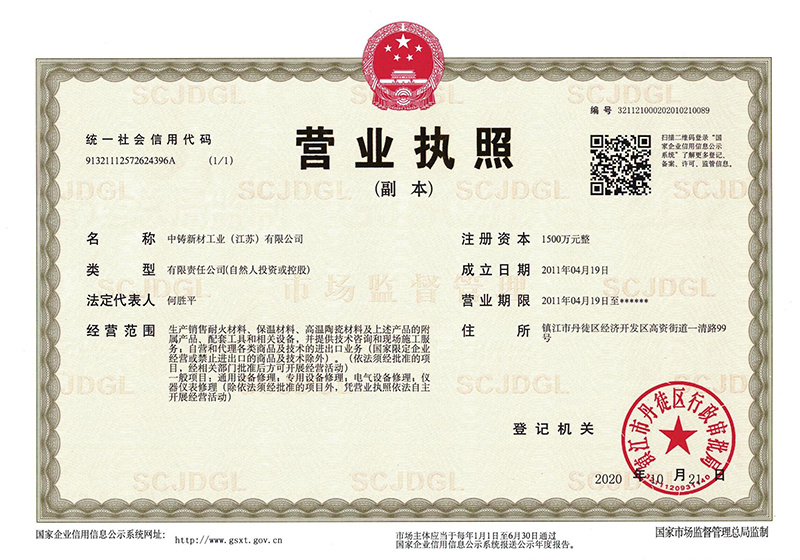News
SINO-FOUNDRY—professional refractory manufacturer
How Dry Ramming Mass Enhances Copper Metallurgy Efficiency
2025-06-01
How Dry Ramming Mass Enhances Copper Metallurgy Efficiency Table of Contents 1. Introduction to Copper Metallurgy 2. Understanding Dry Ramming Mass 3. The Importance of Dry Ramming Mass in Copper Metallurgy 4. Mechanism of Action: How Dry Ramming Mass Works 5. Benefits of Using Dry Ramming Mass in copper metallurgy 6. Applications of Dry Ramming Mass in the Metallurgy Indu
How Dry Ramming Mass Enhances Copper Metallurgy Efficiency
Table of Contents
- 1. Introduction to Copper Metallurgy
- 2. Understanding Dry Ramming Mass
- 3. The Importance of Dry Ramming Mass in Copper Metallurgy
- 4. Mechanism of Action: How Dry Ramming Mass Works
- 5. Benefits of Using Dry Ramming Mass in copper metallurgy
- 6. Applications of Dry Ramming Mass in the Metallurgy Industry
- 7. Comparative Analysis: Traditional Materials vs. Dry Ramming Mass
- 8. Sustainability and Environmental Impact of Dry Ramming Mass
- 9. The Future of Dry Ramming Mass in Copper Metallurgy
- 10. Conclusion
- 11. FAQs
1. Introduction to Copper Metallurgy
Copper metallurgy is a fundamental sector in the mining and metallurgical industries, responsible for refining copper ores into commercially viable materials. The efficiency of copper production processes is crucial, as it directly affects profitability, quality, and sustainability. In recent years, the introduction of innovative materials, such as dry ramming mass, has revolutionized this segment, leading to enhanced operational performance and reduced environmental impact.
2. Understanding Dry Ramming Mass
Dry ramming mass is a type of refractory material utilized in high-temperature applications, particularly in metallurgical furnaces. Comprising a blend of fine aggregates and bonding agents, dry ramming mass is designed to withstand extreme conditions, offering thermal stability and durability. Unlike traditional ramming mass that requires water for activation, dry ramming mass is applied in its dry form, making it easier to handle and install.
3. The Importance of Dry Ramming Mass in Copper Metallurgy
The importance of dry ramming mass in copper metallurgy is multi-faceted. This material enhances the lining of furnaces, offering improved thermal insulation and heat retention. By maintaining optimal temperatures, dry ramming mass minimizes heat loss, thereby increasing energy efficiency. Moreover, its adhesion properties ensure better structural integrity, resulting in reduced wear and prolonging the lifespan of furnace linings.
4. Mechanism of Action: How Dry Ramming Mass Works
The mechanism of action of dry ramming mass lies in its unique composition. The fine aggregates create a dense, compact material layer that can withstand high temperatures and corrosive environments typical in copper metallurgy. When subjected to heat, the bonding agents in the mass activate and form a solid bond with the underlying structure, providing a robust barrier against thermal and chemical degradation. This process ensures that the furnace operates efficiently, optimizing the melting and refining processes of copper.
5. Benefits of Using Dry Ramming Mass in Copper Metallurgy
The benefits of utilizing dry ramming mass in copper metallurgy are significant:
5.1 Enhanced Thermal Efficiency
Dry ramming mass provides superior thermal insulation, reducing energy consumption and costs. By minimizing heat loss, it ensures that furnaces operate at optimal temperatures.
5.2 Increased Durability and Lifespan
The robust nature of dry ramming mass contributes to longer-lasting furnace linings, reducing the frequency of maintenance and replacement. This durability translates into lower operational costs and minimized downtime.
5.3 Improved Safety Standards
With enhanced structural integrity, dry ramming mass reduces the risk of furnace failures. This safety improvement ensures a more controlled working environment, protecting personnel and equipment.
5.4 Cost-Effectiveness
The combination of reduced energy consumption, lower maintenance costs, and increased operational efficiency contributes to the overall cost-effectiveness of using dry ramming mass in copper metallurgy.
6. Applications of Dry Ramming Mass in the Metallurgy Industry
Dry ramming mass is widely used in various applications within the metallurgy industry, particularly in:
6.1 Copper Smelting Furnaces
In copper smelting furnaces, dry ramming mass is employed to line the furnace walls, providing thermal insulation and resistance to corrosion from molten metal.
6.2 Copper Refining Processes
During the refining of copper, dry ramming mass can be used to enhance the overall efficiency of the process, ensuring that the desired purity and quality of copper are achieved.
6.3 Continuous Casting Processes
In continuous casting processes, dry ramming mass plays a crucial role in protecting the molds and ensuring the smooth flow of molten copper, contributing to better product quality.
7. Comparative Analysis: Traditional Materials vs. Dry Ramming Mass
A comparative analysis of traditional ramming materials versus dry ramming mass reveals significant advantages:
7.1 Performance Under High Temperatures
While traditional ramming masses may struggle to maintain performance under extreme temperatures, dry ramming mass excels, ensuring consistent operational efficiency.
7.2 Ease of Handling and Application
Unlike conventional materials that require extensive preparation and application processes, dry ramming mass is simpler to handle, allowing for quicker installation and reduced labor costs.
7.3 Refractory Properties
The refractory properties of dry ramming mass surpass those of traditional materials, providing superior resistance to thermal shocks and chemical attacks.
8. Sustainability and Environmental Impact of Dry Ramming Mass
In today’s environmentally-conscious landscape, the sustainability of materials used in metallurgy is paramount. Dry ramming mass boasts several eco-friendly attributes:
8.1 Reduced Carbon Footprint
Using dry ramming mass reduces energy consumption in metallurgical furnaces, leading to lower carbon emissions during copper production.
8.2 Minimized Waste Generation
The longevity and durability of dry ramming mass mean less frequent replacements, resulting in minimal waste generation and a reduced environmental footprint.
8.3 Non-Toxic Composition
Dry ramming mass is typically composed of non-toxic materials, contributing to a safer working environment and minimizing health risks for workers.
9. The Future of Dry Ramming Mass in Copper Metallurgy
The future of dry ramming mass in copper metallurgy appears promising. As the industry continues to evolve, the demand for more efficient, cost-effective, and environmentally friendly materials will drive innovation in dry ramming mass formulations. Ongoing research is aimed at enhancing its properties, further increasing its applicability across various metallurgical processes.
10. Conclusion
Dry ramming mass is revolutionizing the field of copper metallurgy, significantly enhancing efficiency, safety, and sustainability. Its superior thermal properties, durability, and cost-effectiveness make it an invaluable asset in modern metallurgical processes. As the industry strives toward increased efficiency and reduced environmental impacts, the adoption of dry ramming mass will likely continue to grow, paving the way for a more sustainable future in copper production.
11. FAQs
Q1: What is dry ramming mass made of?
A1: Dry ramming mass is composed of fine aggregates and bonding agents, specifically designed to withstand high temperatures and harsh chemical environments in metallurgical applications.
Q2: How does dry ramming mass improve energy efficiency?
A2: By providing superior thermal insulation and minimizing heat loss, dry ramming mass ensures that furnaces operate at optimal temperatures, reducing overall energy consumption.
Q3: Is dry ramming mass environmentally friendly?
A3: Yes, dry ramming mass is composed of non-toxic materials, reduces waste generation, and lowers carbon emissions in copper production processes.
Q4: How long does dry ramming mass last in furnaces?
A4: The durability of dry ramming mass can extend the lifespan of furnace linings significantly, often reducing the need for frequent maintenance and replacements.
Q5: Can dry ramming mass be used in other metallurgical applications besides copper?
A5: Yes, dry ramming mass can be effectively utilized in various metallurgical processes, including those involving other non-ferrous metals and continuous casting operations.
Related News
2024-11-05
Zhongzhu New Materials Industry sincerely invites you to participate in the 24th International Forum and Exhibition on Recycled Metals.

WeChat public account

View mobile website
Address : No. 99, Yiqing Road, Gaozi Street, EconomicDevelopment Zone, Dantu District, Zhenjiang City
Fax : +86-511-85683066
E-mail : sales@sfr168.com
Website : https://www.sfr168.com
Copyright©2023 Sino-Foundry Refractory(Jiangsu) Co.,Ltd. Powered by:www.300.cn
Copyright©2023 Sino-Foundry Refractory(Jiangsu) Co.,Ltd.
IPV6 | SEO | Cloud Information



